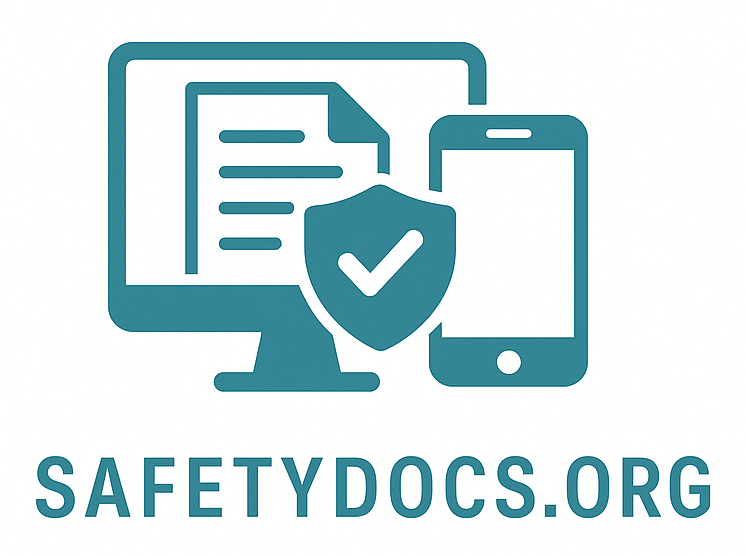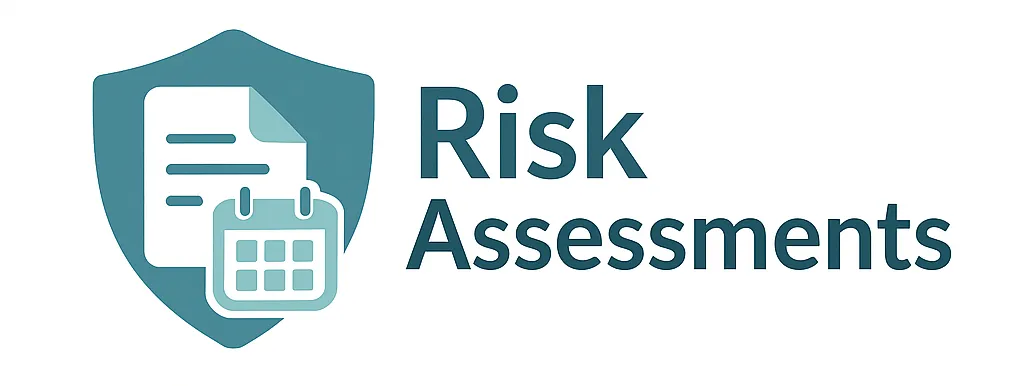
Event Safety Management System: A Guide to Event Safety
Event Safety Management System: Ensuring Safe and Smooth Events
Understanding Event Safety Management System
When planning an event, ensuring safety is a top priority. An event safety management system is a comprehensive approach designed to prevent accidents, manage risks, and guarantee the security of attendees, staff, and resources. Whether it's a small corporate gathering or a large-scale concert, having a reliable safety management system in place is essential for the success of any event.
Event safety extends beyond providing a safe environment; it ensures that all logistical, security, and medical aspects are in place, allowing the event to be conducted smoothly. By implementing a robust safety system, event organizers can protect attendees and minimize the chances of an emergency that could disrupt the event.
The Importance of an Event Safety Management System
Managing safety at events involves more than just having medical personnel on standby or implementing crowd control measures. It's about creating a proactive approach that addresses risks before they become issues. A well-implemented safety system protects everyone involved, ensures legal compliance, and enables event organizers to focus on the experience rather than potential hazards.
One of the most critical aspects of an event safety management system is that it helps to mitigate potential risks that could arise at any point during the event. It ensures that the event complies with local regulations, addresses emergency preparedness, and implements measures that protect both the public and the staff. From small gatherings to large festivals, safety must be a top concern, as any oversight can lead to unwanted consequences.
Components of an Effective Event Safety Management System
A thorough event safety management system consists of several key components that help address various aspects of event safety:
1. Risk Assessment
Before the event, organizers must identify potential risks and hazards. This can include anything from fire hazards to concerns about crowd control. A risk assessment helps prioritize these issues and establish preventive measures. Risk assessments are crucial because they help identify safety hazards before the event starts. It can cover areas such as natural disasters, crowd control, security threats, and medical emergencies.
2. Security and Crowd Control
Whether your event is intimate or large, having a solid security plan is essential. This includes deploying trained security personnel and setting up barriers to manage crowds and ensure order. Event organizers need to understand crowd psychology and plan the event layout accordingly. This helps in preventing overcrowding and minimizes the risk of accidents. Crowd control involves establishing designated entry and exit points, monitoring crowd movements, and providing clear signage.
3. Health and Medical Services
Having accessible medical services is vital. Event organizers should ensure first aid kits are readily available and that trained medical personnel are on hand in case of emergencies. Having a medical team on-site is a requirement for many significant events, particularly those involving physical activities such as concerts or sports. Medical staff should be briefed about the event’s nature and potential hazards, such as alcohol consumption or extreme weather conditions.
4. Emergency Response Plan
No matter how well you plan, emergencies can still occur. A sound safety management system includes a clear emergency response plan that details actions to be taken in the event of a fire, medical emergency, or other unforeseen incidents. This plan should be practiced with staff and volunteers before the event. It includes the steps to be taken in the event of an evacuation, the location of emergency exits, and the protocol for dealing with various emergencies, such as fire or medical incidents.
5. Communication Channels
Clear communication between event organizers, staff, security, and emergency services is vital. Using radios or event management apps helps ensure that everyone stays connected and can act swiftly in emergencies. A communication plan should also include instructions on how attendees can report safety concerns or emergencies. In significant events, having a public announcement system to broadcast important safety information is also essential.
Benefits of Implementing an Event Safety Management System
1. Reduced Risk of Accidents
With a clear system in place, the likelihood of accidents is significantly reduced. Risk assessments, security measures, and health protocols all contribute to a safer environment. Proper planning ensures that safety measures are in place to address emergencies before they occur, preventing injuries and accidents that could mar the event.
2. Legal Compliance
Many jurisdictions require specific safety standards for events. By implementing an event safety management system, you ensure your event complies with all relevant health and safety laws. Non-compliance with safety regulations can result in hefty fines or, worse, the cancellation of the event. A well-structured system ensures that all safety regulations are met, including those related to fire safety, crowd management, and first aid requirements.
3. Improved Reputation
Organizing a safe event improves your credibility. Attendees feel more confident in your ability to handle their safety, which enhances the event's reputation and can lead to higher attendance in the future. When an event is perceived as safe, it generates positive word of mouth, which helps attract more attendees to future events.
4. Smooth Event Flow
With a safety management system, everything runs smoothly. Organizers can focus on the event’s content and enjoyment rather than managing safety issues on the fly. By having clear plans in place for every aspect of safety, event coordinators can avoid last-minute emergencies, ensuring a more enjoyable experience for everyone involved.
The Role of Technology in Event Safety Management
Advancements in technology have played a significant role in improving event safety. Many modern systems incorporate real-time monitoring tools that track crowd movements, issue health alerts, and assess security status. With cloud-based systems, event organizers can access data remotely, making it easier to manage safety from anywhere.
Moreover, event safety apps facilitate easy communication, allowing staff to report incidents in real time. These technologies not only streamline processes but also provide valuable data for improving future events. GPS tracking, for example, helps monitor attendee movements, and AI-powered systems predict potential safety concerns based on event data.
Planning for Different Types of Events
Different types of events come with unique safety concerns. For example, a music festival might require a greater focus on crowd control and noise levels, while a corporate event may need more attention to fire safety and accessibility. Understanding the type of event and the associated risks helps in crafting a targeted safety management plan.
Outdoor Events
Outdoor events often present additional challenges, such as weather hazards, site accessibility, and logistical planning. A solid safety management system can include contingency plans for inclement weather, such as tents or covered spaces, as well as emergency evacuation routes.
Indoor Events
Indoor events focus on crowd flow, fire exits, and the overall layout of the space to ensure a safe and efficient experience. Ensuring proper signage, access to emergency exits, and creating safe zones is crucial for maintaining indoor event safety. Additionally, indoor events are subject to various legal requirements, including building codes and fire regulations.
Training Staff for Event Safety
Event safety doesn’t rest solely on the system; staff training is equally important. Organizers must ensure that all event staff are trained on how to handle emergencies, use safety equipment effectively, and implement crowd control measures. This ensures that everyone knows what to do in the event of an incident, thereby reducing confusion and delays.
Training should encompass everything from basic first aid to evacuation procedures in the event of a fire or other emergency. Regular drills can ensure that staff members are well-prepared for any situation, making the event safer for everyone involved.
Evaluating and Improving Event Safety Systems
After the event, it's essential to assess how effectively the safety management system performed. Event organizers should conduct debriefing sessions with staff and security personnel to evaluate the effectiveness of the safety measures in place. Gathering feedback from attendees can also provide valuable insights into what worked and what areas need improvement for future events.
By continuously evaluating and refining safety management systems, organizers can stay prepared for any situation and ensure that future events are even safer and more efficient.
FAQs
1. What is the primary purpose of a safety management system for events?
A safety management system helps identify and mitigate risks to ensure the well-being of all attendees, staff, and resources during an event.
2. Why is crowd control important at significant events?
Crowd control helps maintain order, prevent accidents, and ensure the safety of participants by managing movement and behaviour in large groups.
3. How do emergency plans improve event safety?
Emergency plans provide clear actions for handling unexpected situations, ensuring a prompt and organized response to minimize risks.
4. What role does technology play in event safety?
Technology enhances event safety by enabling real-time monitoring, communication, and data analysis, allowing for the efficient management of risks.
5. How can staff training contribute to a safer event?
Training staff on emergency procedures, safety protocols, and crowd management ensures quick and effective action during potential incidents.
Conclusion
An event safety management system is an essential tool for organizing safe and successful events. From risk assessment to emergency response, having a clear plan in place helps mitigate risks and ensures smooth operations. By embracing a comprehensive safety management approach, organizers can create memorable events where attendees feel secure and confident.
Ensuring the safety of all involved not only prevents accidents but also enhances the overall experience. With the right systems and trained personnel, event organizers can focus on delivering quality events that everyone can enjoy without worry.
Please suggest the type of alt text you would like for these keywords.

